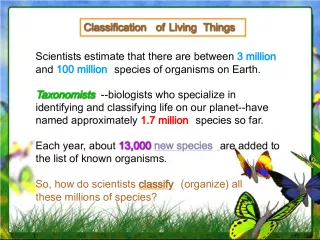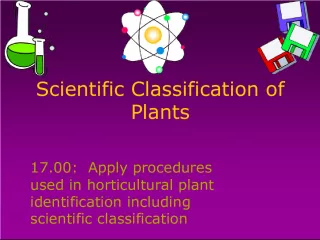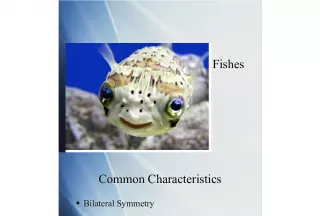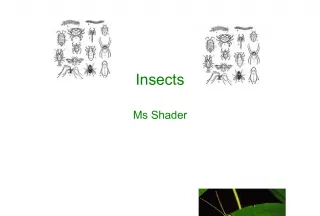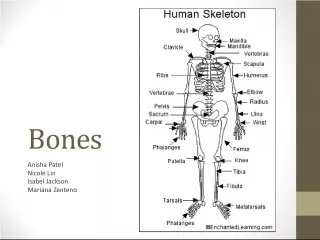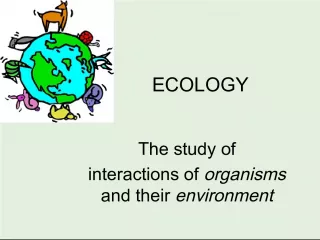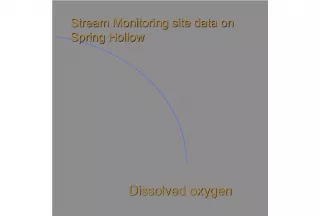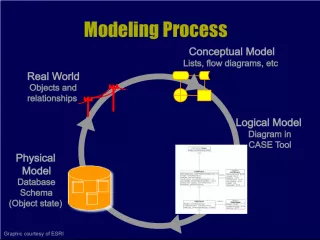Levels of Classification and Naming of Species
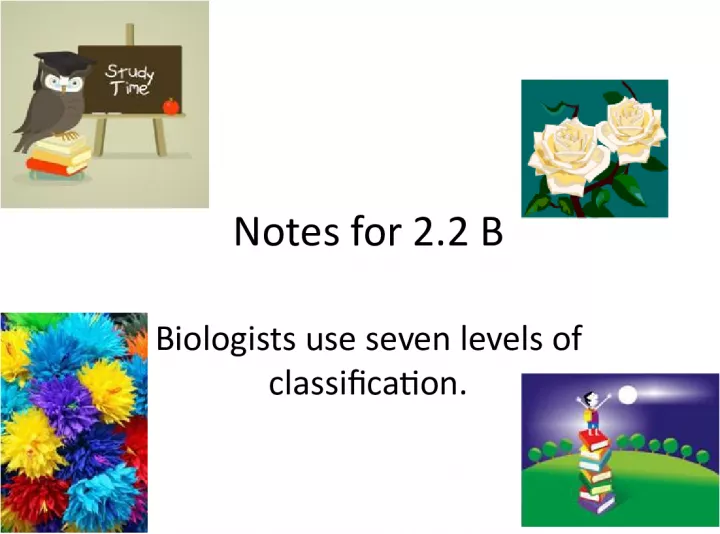

Biologists utilize seven levels of classification to group organisms based on their characteristics. The renowned scientist Linnaeus, who named around 4000 species, classified all the organisms into plants or animals
- Uploaded on | 4 Views
-
 scarlett
scarlett
About Levels of Classification and Naming of Species
PowerPoint presentation about 'Levels of Classification and Naming of Species'. This presentation describes the topic on Biologists utilize seven levels of classification to group organisms based on their characteristics. The renowned scientist Linnaeus, who named around 4000 species, classified all the organisms into plants or animals. The key topics included in this slideshow are . Download this presentation absolutely free.
Presentation Transcript
Slide1Notes for 2.2 BBiologists use seven levels of classification.
Slide2Linnaeus named about 4000 species.• All 4,000 organisms Linnaeus named were plants or animals. • Today, scientists have named over a million species. • Linnaeus used appearance to classify organisms.
Slide3Naming Species• genus —a group of species that have similar characteristics • binomial nomenclature— a two-word naming system developed by Linnaeus (genus, species) • Chameleo graciis
Slide4Naming Species (cont’d.)• binomial --two names • nomenclature —list of names • Ursus arctos
Slide5Using Scientific Names• The scientific name must include both the genus and species names in order to be clear. • Rules to follow: – Genus names comes first; the first letter is capitalized, and the entire name is in italics or underlined. – Species name is also italicized but not capitalized. Rhodedendron maximum
Slide6Organisms can be classified into sevenlevels. • Major Taxonomic Levels • Kingdom • Phylum • Class • Order • Family • Genus • Species • Note: There are many subdivisions of the seven main taxonomic levels, such as Subphylum, Subclass, Infraclass, and so on. You may see many of these other sublevel taxa listed in the taxonomic tree of an organism. See pages 54-55 for examples.
Slide7Cont’d.• In order to remember the levels of classification, create a memory aid such as: • K ing • P hillip • C alled for an • O rder of • F ried • G reat • S wordfish.
Slide8Dichotomous keys and field guideshelp people identify organisms. • dichotomous key —a series of paired statements, each with only 2 answers, that can be used to identify an organism’s genus and species • will give you the scientific name • See page 57B for an example.
Slide9Field Guides• Field guides include paintings or photographs, maps, and other information . • See page 58 B for an example.

